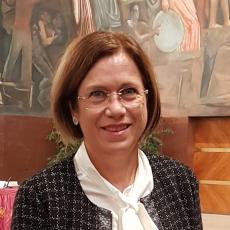Objectives
Goal of this course is to provide an overview of the large world of wireless and wired technologies that are will be used for the Smart Environments. These technologies will be able to provide infrastructures of networks and digital information used in the urban spaces and smart environments to build advanced applications.
Recent advances in areas like pervasive computing, machine learning, wireless and sensor networking enable various smart environment applications in everyday life. The main goal of this course is to present and discuss recent advances in the area of the Internet of Things, in particular on technologies, architectures, algorithms and protocols for smart environments with emphasis on real smart environment applications. The course will present the communication and networking aspects as well as the processing of data to be used for the application design. The course will propose two cases studies in the field of smart environments: Vehicular Traffic monitoring for ITS applications and Network cartography. In both cases instruments, models and methodologies for the design of smart environments applications will be provided.
Channels
 FRANCESCA CUOMO Teacher profile
FRANCESCA CUOMO Teacher profile
Programme
The program is divided in four main parts:
1. Enhanced Services by Smart Devices (Introduction to Cyber Physical Systems; Internet of Things (IoT), Manufacturing, Logistic and Supply Chain, Micro-payments by NFC, Intelligent Transport Systems, Indoor Positioning Systems, Pharmaceutical and Healthcare, Building Automation, Smart Home, Smart Cities and Smart GRID)
2. Data Acquisition, Coding, and Aggregation in Smart Environments (Data acquisition: Sampling, quantization; Source coding of multimedia signals (audio, image, video, etc.); Localization technologies and location-aware Services; Georeferenced data collection/aggregation protocols in IoT Networks);
3. Device Communication and Networking (Architectures in the access and in the backbone networks; Basic principles for the wireless networking; Digital modulation. Coding, Static and Dynamic access techniques; Review of TCP/IP networking; LAN/MAN technologies; Ethernet; Wi-Fi; Long Term Evolution and 5G, Low range and low power technologies: RFID, NFC, Bluetooth, Zigbee; LoRAWAN as enabling technologies for IoT; Architectures and protocols for virtual and augmented reality environments thought Voice and Video over IP, Dynamic Adaptive HTTP Streaming, Video 360°);
4. Practical examples of Data Processing for Smart Environments (Vehicular Traffic monitoring: Data-driven vs. Model-driven approaches; Online vehicular traffic prediction and anomaly detection; Analysis derived from real data and emulation platforms; Examples to be defined during the course projects)
Adopted texts
Scientific papers available at the course web site
https://sites.google.com/a/uniroma1.it/francescacuomo/didattica
Exam modes
Standard way:
• 2 open questions (written answers are required) approx 2/3 evaluation
• face-to-face interview approx 1/3 evaluation
Homework/Project-based:
• 2 Homeworks/Projects approx 2/3 evaluation
• face-to-face interview approx 1/3 evaluation
| Exam reservation date start | Exam reservation date end | Exam date |
|---|---|---|
| 13/12/2019 | 06/01/2020 | 10/01/2020 |
| 13/05/2020 | 11/06/2020 | 18/06/2020 |
| 13/06/2020 | 14/07/2020 | 21/07/2020 |
| 13/08/2020 | 01/09/2020 | 16/09/2020 |
 MAURO BIAGI Teacher profile
MAURO BIAGI Teacher profile
- Academic year: 2019/2020
- Curriculum: Curriculum unico
- Year: Second year
- Semester: Second semester
- SSD: ING-INF/03
- CFU: 6
- Attività formative caratterizzanti
- Ambito disciplinare: Tecnologie dell'informatica
- Exercise (Hours): 36
- Lecture (Hours): 24
- CFU: 6.00
- SSD: ING-INF/03
